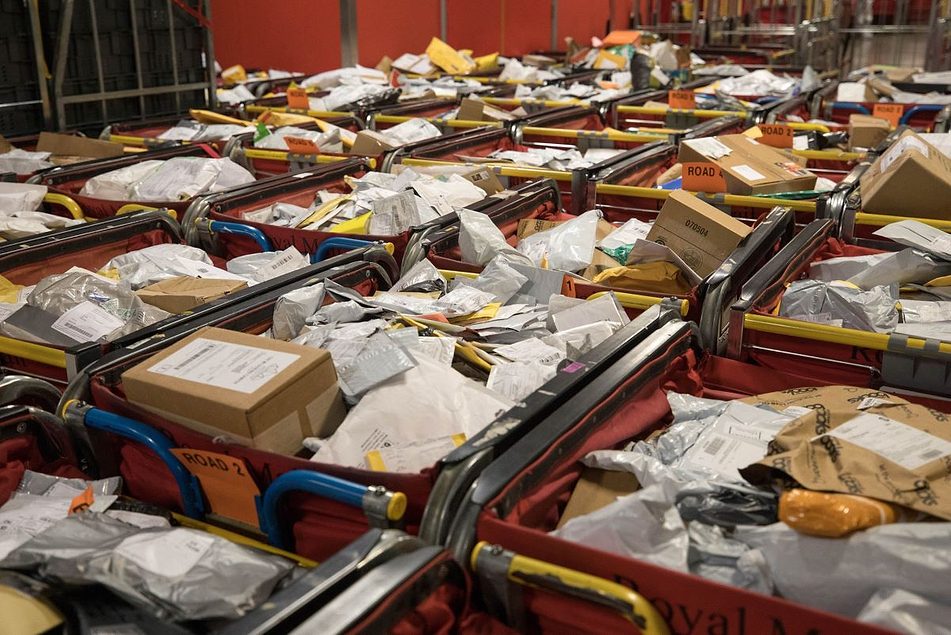[ad_1]
Sortation systems have advanced significantly in a relatively short period of time, from the manual technologies of the pre-1950s to today’s advanced, high-speed, automated version.
Sortation began with simple manual methods that relied on workers physically handling and organizing items based on labels and other identifiers. Things became a bit more streamlined when conveyor belts were introduced onto warehouse floors and in distribution centers. They helped transport items from one part of the warehouse to another, though operations were largely still manual.
Things changed with the rise of automation in the 1950s. Though the technologies used then weren’t nearly as advanced as they are today, early automation sortation systems began to incorporate barcodes, sensors and software to sort items according to predefined criteria.
The 1960s and 1970s brought advances in computerization, which helped with data processing and further complemented sortation, while the 1980s saw the introduction of the warehouse management system. It helped to enable just-in-time delivery, made possible by more efficient sortation and inventory management techniques, while also reducing waste. Around the turn of the century, robotics began to play a larger role in sortation.
Today’s advanced sortation systems are defined by state-of-the-art automation technologies, including artificial intelligence and machine learning. They incorporate advanced sensors and crunch data in real time to optimize sortation and empower management to make decisions in real time. They also almost completely take the manual element out of the process.
High-speed sortation systems are designed to rapidly sort and send items, materials, packages and cases to their defined locations via conveyor systems and diverters. By reducing manual labor, the modern-day warehouse significantly boosts productivity and greatly reduces errors.
Key components of the modern-day high-speed sortation system include:
- Identification tags, including barcodes, radio frequency identification tags and sensors.
- Conveyors, to transport items within the warehouse or distribution center.
- Diverters, working in tandem with the identification system and diverting items from the main conveyor via chutes and lanes to processing areas around the facility.
- Outfeed systems, storing items in chutes, bags or racks in between processes.
- Control systems, consisting of sophisticated software programs designed to manage the entire sortation process. They help coordinate movements throughout the warehouse, activate diverters based on predefined criteria, and provide real-time information and data about each processed item.
Additional innovations are paving the way for the future of the field.
Sliding shoe sortation utilizes a number of “shoes” that slide across a conveyor belt to help guide items to their correct location. Benefits include a high level of accuracy, the ability to handle a wide range of items and item sizes, and high speed. The gentle nature of the sliding motion makes this an ideal option for fragile items as well.
Crossbelt sortation utilizes independently controlled conveyor belts that are arranged perpendicular to the main conveyor track. This allows them to retrieve items from the main track and move them to other areas. Crossbelt sortation helps reduce manual labor needs, is known for its high accuracy, and is flexible enough to handle items of various shapes and sizes.
Tilt-tray sorters are commonly deployed when there’s a need for high-speed, accurate sorting in a distribution facility. They use a variety of individual trays, which are arranged in a continuous loop, to divert items to designated chutes or locations. In addition to serving as a high-speed, highly accurate option, it’s also a low-maintenance solution.
So what type of sortation technology is right for your facility?
There’s no one universal right or wrong answer — just the one that works best for a given facility based on its size, and unique operating requirements.
Key considerations to weigh before implementing an automated sortation system include:
- Scalability, and ease of adapting to seasonal ebbs and flows.
- The footprint of the facility, and the type of system it can accommodate.
- How much energy it uses, especially in facilities where sustainability is prioritized.
- The ability to integrate with other advanced technologies, like warehouse control systems.
Technology is only going to advance, and those who fail to embrace innovation are in danger of falling behind. Now is the time to take stock of your facility, and determine where you can make efficiency improvements to develop new competitive advantages.
Cecile Dick-Calmes is marketing manager with Daifuku Intralogistics America.
[ad_2]
Source link



